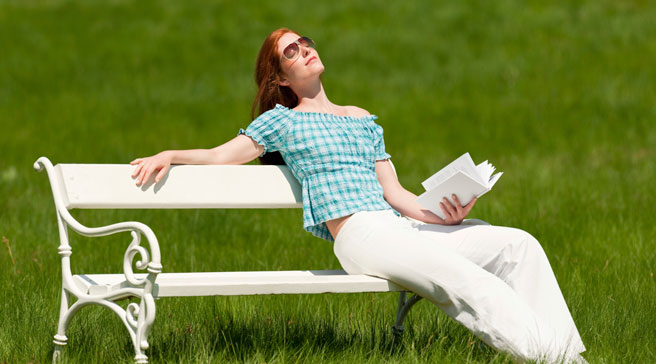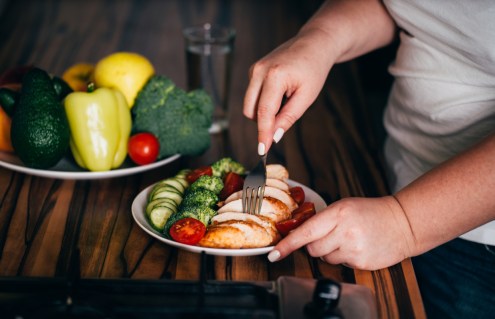Get your sunshine quota
Moving between pools of electric light in the dark depths of winter, we are filled with a longing for sunshine. And, says Anastasia Stephens, it’s vital we get our vitamin D from somewhere

A recent review of more than 140 studies published in the journal of the British Nutrition Foundation found that, by the end of winter in the UK, more than 78 per cent of women are vitamin D deficient.
Called the ‘sunshine vitamin’ because it is made beneath the skin on exposure to UV light, it comes as no surprise that by early spring we should be developing serious sun cravings. Needed for strong bones and immunity, deficiency in vitamin D isn’t only linked to a susceptibility to colds and flu, it is also linked to low fertility and depression, as well as joint pain.
‘For a combination of reasons, the problem of vitamin D deficiency has probably never been worse,’ says dietician Dr Carrie Ruxton, who co-authored the study into the deficiency. Ninety per cent of the body’s supply of the vitamin comes from sun exposure, says Ruxton.
With short winter days and cloudy weather, by this time of year we are seriously sun-deprived – and when the sun is out, its rays are too weak from November to February to trigger vitamin D production. We can get vitamin D from food, but many diet-conscious women have cut down on eggs and butter, two of the best food sources of the vitamin. Another factor that threatens our vitamin D levels, says Ruxton, is excess body weight. The vitamin becomes trapped in body fat, which prevents it from circulating in the blood.
The EU recommended daily value for vitamin D is 200iu per day and 400iu per day over the age of 50. While that is enough to prevent deficiency symptoms, current research suggests we need 10 times this amount per day (2,000–4,000iu) to reap vitamin D’s health benefits.
‘The latest studies show that the health benefits of vitamin D, such as protection from cancer, inflammation, Alzheimer’s disease and bone weakness, occur when people are regularly getting 2,000 to 4,000iu of vitamin D,’ says Dr Hans Hoeck, vitamin D researcher and lecturer at Aalborg University in Denmark. ‘That’s 10 times more than the EU recommendations. People in countries such as the UK and Denmark are getting far less than even these amounts. Our research shows the average British person is getting less than 400iu a day in winter. And for people who have office jobs those levels might not go up much, even in summer.’
The best strategy for topping up your levels, says Hoeck, it to get the vitamin from as many sources as possible — and take a good supplement, such as SunVit-D3, £7.82 for 180 tablets. ‘Eat egg yolk, butter and oily fish, which are all good sources of vitamin D,’ he says. ‘The vitamin is also added to milk and cereals. But in the winter, diet is unlikely to provide enough, so it would be wise to supplement. For people who work long hours in offices, or the elderly, I would recommend taking a supplement year-round.’
Yet sunshine remains the most efficient way of making vitamin D. As the vitamin can be stored in the liver to give us a constant supply, ‘safe sunbathing’ — exposing your skin to sunlight for short periods of time without burning — from March onwards is the best way of building up vitamin D reserves. Different skin types make vitamin D at different rates. The fair skin of blond and auburn-haired people absorbs the most UV, but it also burns the quickest. They only need 20 minutes of sun, exposing most of their skin, to generate 10,000iu – a week’s worth of vitamin D at optimal levels. Mediterranean skin would need 90 minutes and Afro-Caribbean skin may need three hours to generate the same amount.
‘Take opportunities to get into the sun,’ says Hoeck. ‘In winter, go for a winter-sun or skiing break, as the intense sun in the mountains will enable you to make vitamin D. Sunbathing for vitamin D while protecting your skin from burning is a delicate balance. Expose as much skin to sunlight as you can, but cover it up again well before burning. A week in the sun will give your body up to a month’s supply of vitamin D.’








